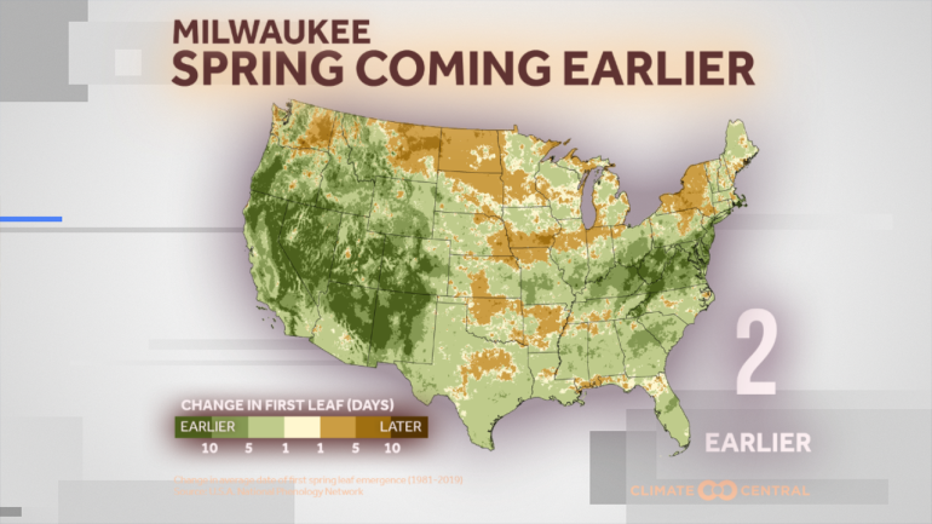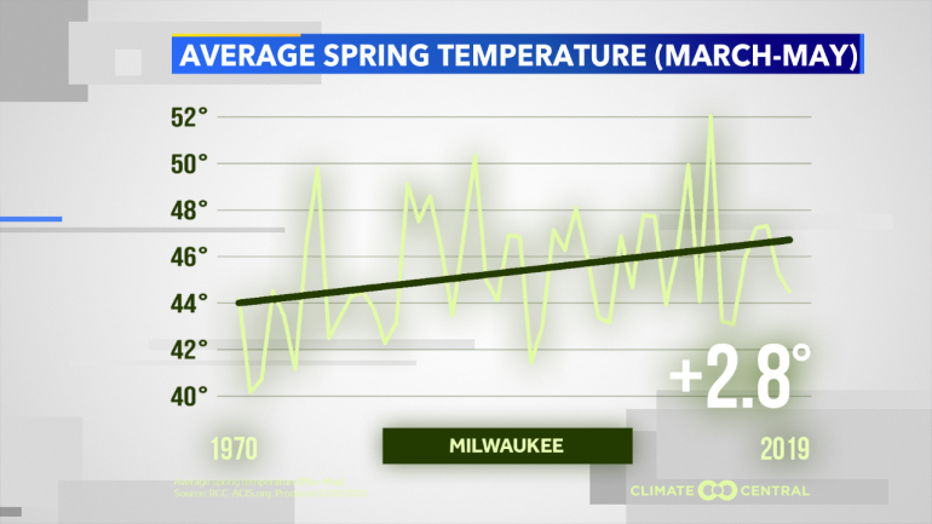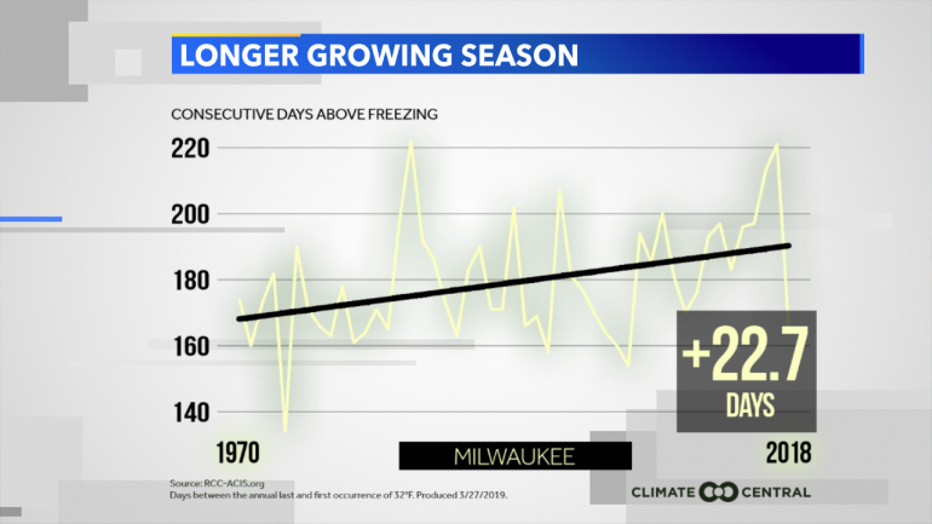Spring is arriving earlier across much of the US, but not so much in Wisconsin
SOUTHEAST WISCONSIN -- After a very mild winter in Wisconsin, our meteorological spring has already gotten off to a warm start. March and April are big transition months, where extreme variations in temperatures are likely, but how does it differ from just 30 years ago?
Surprisingly, our leaf emergence change in Milwaukee hasn't been that drastic compared to other parts of the country, according to the National Phenology Network.

The average change in first leaf emergence 1981-2019 national view
The most drastic change in spring growth has come in the Desert Southwest and the Appalachians. This spring has already been the earliest for many areas in the south, and just about all of North and South Carolina. While our spring season has only shifted two days, it does correlate with how our spring temps have only increased 2.8°F on average from March to May.
Winter is one of our fastest-changing seasons in terms of warming, while spring is one of our slowest warming seasons, by comparison. All seasons in Milwaukee are seeing an increase in temperature, just at different rates.

Spring average temperature change for Milwaukee 1970-2019
Even though our spring hasn't seen a dramatic change, our overall growing season has. On average, we're seeing over 22 more freeze-free days each year since 1970 in Milwaukee.
The combined impacts of more mild weather will be lengthened allergy seasons, a longer period of time pests can impact crops, and current native vegetation won't be able to adapt fast enough to these seasonal changes. Invasive species are already all over Wisconsin, such as Buckthorn and Honeysuckle, but more plants and animals adapted to warmer climates have more potential to take over without harsh and shorter winters.

Length of the growing season for Milwaukee increase since 1970

